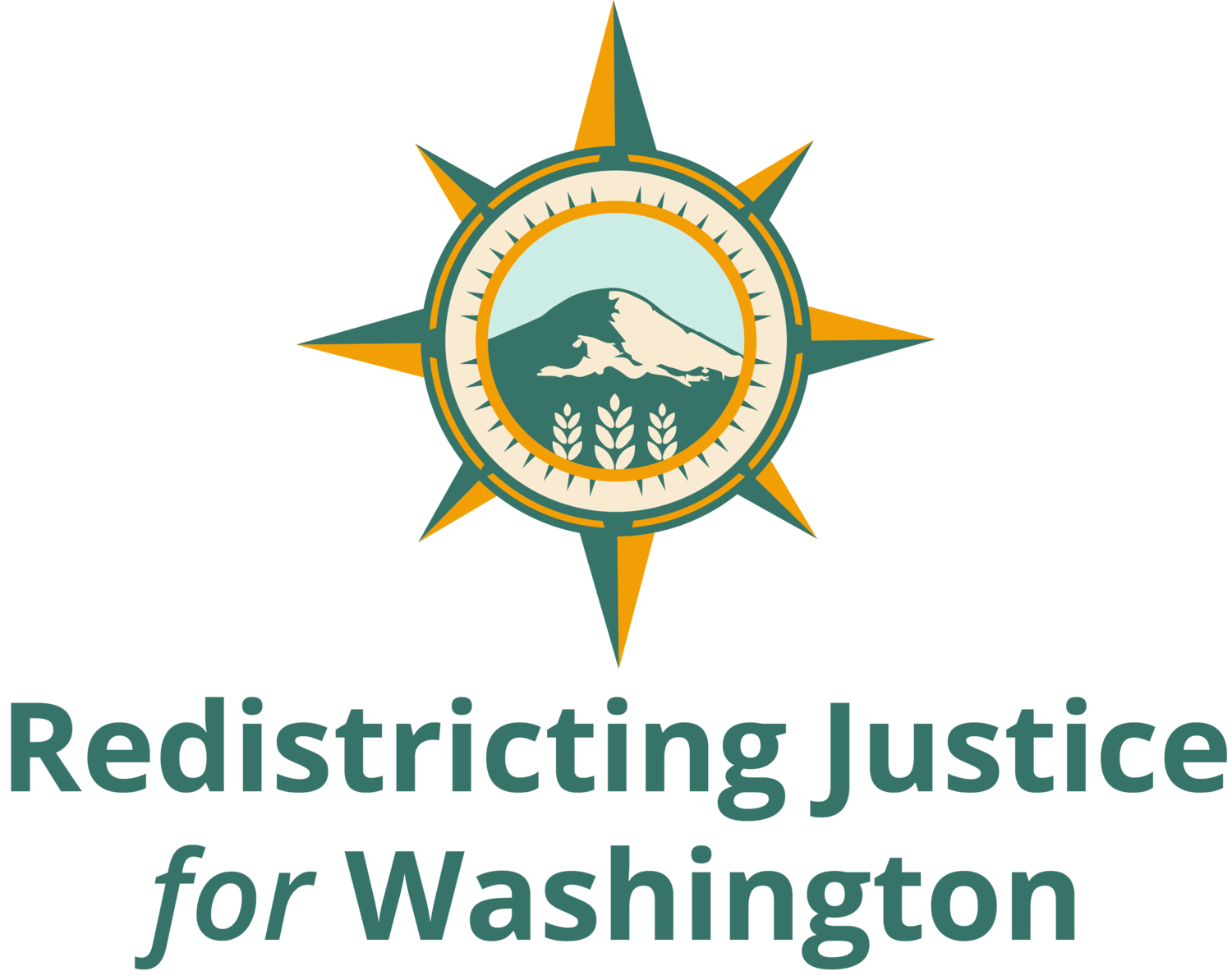WA redistricting map drafts reveal disputes over voting rights for communities of color
On Tuesday Sep. 28, the Washington State Redistricting Commission released their proposed maps for Washington’s new congressional districts. This follows last week’s release of proposed legislative districts. Demographic analysis provided by Redistricting Justice of Washington, a state-wide, non-partisan coalition led by organizations of color shows key places in Washington State where members of the Commission differ on how communities of color should be represented.
Congressional Districts 1, 7, 8, 9: In South King and North Pierce Counties, the 9th Congressional District is currently Washington’s only CD that is majority-minority by population. All commissioners’ proposed maps maintain this status - however, Republican Commissioner Graves splits voters of color across the 9th and 10th CDs. While Graves’ proposal would establish two majority-minority population districts in the 9th and 10th CDs, it would ultimately reduce the proportion of eligible voters of color in both districts, thus weakening the voting power of communities of color (even as he released a statement misleading the public to believing that it would increase minority representation).
Across King County congressional districts, commissioners had a clear intention to preserve incumbents. Despite the League of Women Voters and Redistricting Justice for Washington both proposing a 9th district with diverse South Seattle and without Bellevue, all four map proposals include Bellevue, where Congressman Adam Smith lives, and three proposals exclude parts of South Seattle. Commissioners Sims and Walkinshaw’s 1st district proposals go out of the way to include Medina, where Congresswoman Susan Delbene lives.
Legislative Districts 11, 30, 33, 37, & 47: In South Seattle and South King County, the population of racial minorities has significantly increased. All four commissioners’ map proposals would maintain the majority-minority population status of several legislative districts (the 11th, 30th, 33rd, and 37th LD’s). Commissioners primarily differed on how to draw the 47th LD. Democratic commissioners made the 47th a majority-minority district as well, while Republican commissioners split minority populations across districts.
Legislative Districts 14 & 15: In Yakima County, all four commissioners redrew the 14th and 15th legislative districts to keep the Yakama Reservation together in one legislative district. This was in response to vocal community advocacy on the part of the Yakama Nation, which is opposed to the current district lines which split the reservation between the 14th and 15th LD. However, the commissioners each took different approaches in drawing the Yakima Latino community. The Democratic commissioners each drew a district in Yakima County with majority-Latino eligible voters, while Republican commissioners drew only districts with majority-white eligible voters. The Republican map proposals would almost certainly be considered illegal under the Voting Rights Act, which would require the creation of a majority-minority eligible voter district, based on Latino the population growth.
Legislative District 21: In Snohomish County, the increasingly diverse population creates an opportunity to create the first-ever majority-minority population LD in county history. However, all four commissioners opted to keep lines similar to current districts, likely in order to preserve the constituency of incumbents.
Leaders of color issued the following statements:
“The Latino community in Yakima will get a district that performs one way or another. However, rather than submitting this plan for future lawsuits, it would be beneficial to everyone and save a lot of time and money if the ultimate plan adhered to both the Washington Voting Rights Act and the Federal Voting Rights Act.” -David Morales, Yakima attorney and community advocate
“What I saw in the 1st CD, 9th CD, and the Snohomish County LD’s, was a redistricting commission that seems to think of themselves as ‘incumbent-protection commission’. They prioritize keeping well-connected incumbents in current districts over fair representation communities of color.” -Margot Spindola, Organizer, Latino Community Fund
“Grouping South Seattle with white North Seattle or the wealthy Eastside suburbs diminishes the power of the most Black and Asian community in Washington. We need a 9th Congressional District that empowers South Seattle and South King working class communities of color—and that means drawing a 9th district cognizant of both race and class.” -Andrew Hong, Statewide Lead, Redistricting Justice for Washington
The Redistricting Commission is accepting public comments on their maps on their website and is holding public outreach meetings for state legislative districts on October 5 and congressional districts on October 9. Final map proposals will be released on November 15.

